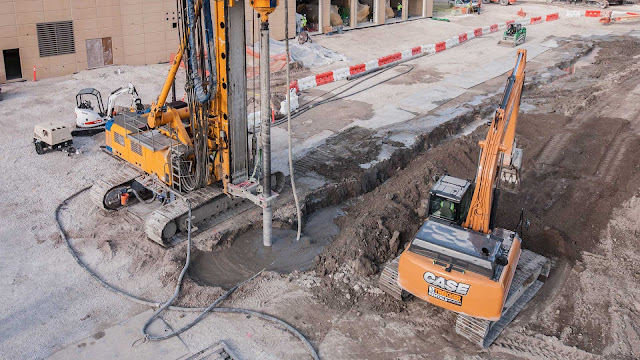Ground Improvement Options for Stabilization of Subgrade Soil
Sub-grade improvement is essential to the improvement of the underlying natural ground formation. Ground treatment is required in low soil locations. The naturally occurring subsoils will not support the embankment and rail system in the worse scenario.
Based on additional considerations such as fill height, soil thickness and compressibility, time and expense, and other soft-ground soil treatment methods, different soft-ground soil treatment methods can be broadly classified as structural (rigid) and geotechnical solutions.
Following methods of ground treatment can be adopted for various poor ground conditions:
- Vibratory surface compaction and Deep vibro-compaction
- Removal and replacement of soft cohesive deposits of limited thickness
- Preloading of existing soft/loose fill
- Preloading with vertical drains.
- Dynamic Replacement.
- Stone Column
- Piled Embankments in areas having soft soil to large depths
- Viaduct for high embankments on ground having very deep soft soils with organic deposits.
The frequency of maintenance (tamping) and the time necessary for maintenance will be largely determined by the type of ground treatment used. Long-term savings may necessitate a significant upfront commitment. The general urge to decrease the project's initial cost (construction cost) results in the adoption of approaches that provide an initial cheaper price but may result in greater ongoing costs. An opposing situation would be the desire for total settling of sub-grade throughout operation in order to maintain maintenance costs as low as possible, resulting in a very high initial cost of construction.
For a given allowable total settlement, a system consisting of structural solutions for zero settlement with ballastless track provision may cost around 2 – 2.5 times that of a traditional ballasted track with geotechnical ground improvement solutions. If the subsoil conditions are poor, the system's life cycle cost can be three to four times higher if sufficient ground treatment is not performed.
As a result, a trade-off between the expense of improving ground and sub-grade characteristics and the cost of maintaining sub-grade deterioration will minimise the life cycle cost of maintenance and renewals. However, in order to realise the full potential of such a trade-off, appropriate transition structures must be provided, which may allow for different ways of ground treatment.
The Conclusion
The approach for carrying out ground improvement works must be based on the necessity of ground settlement criteria during operations, while utilising the permissible settlement to use the most cost-effective ground treatment alternative.


Comments
Post a Comment